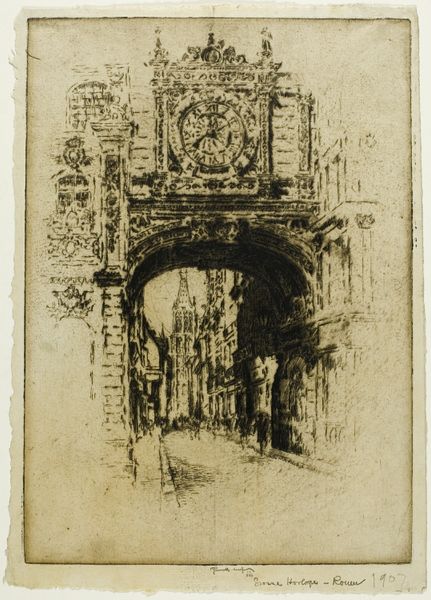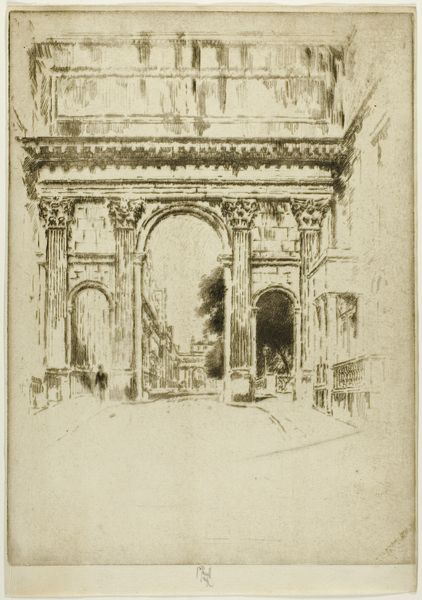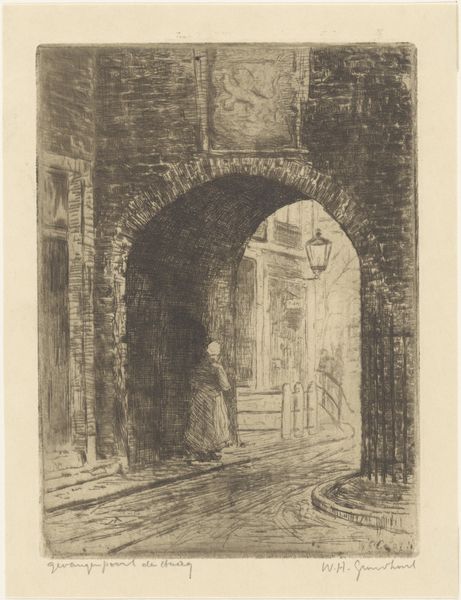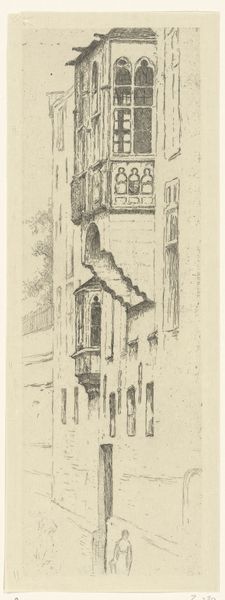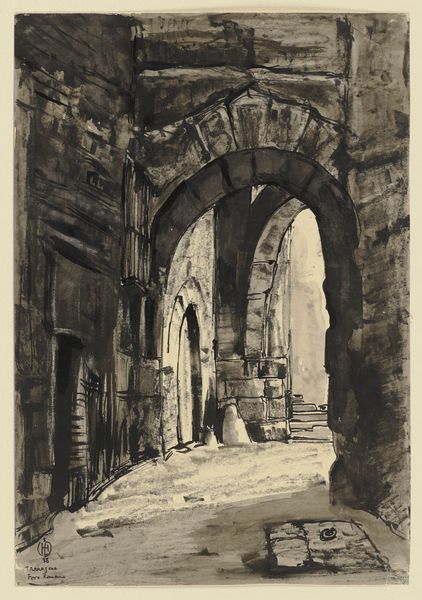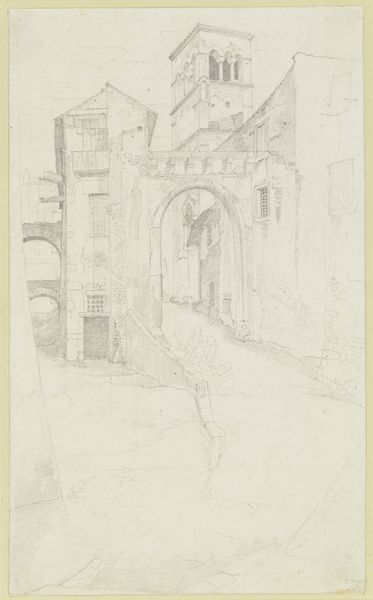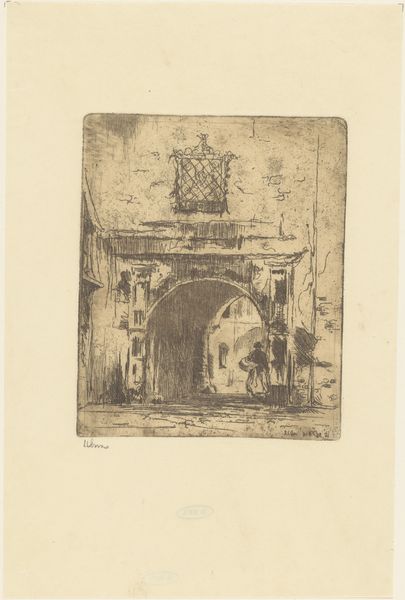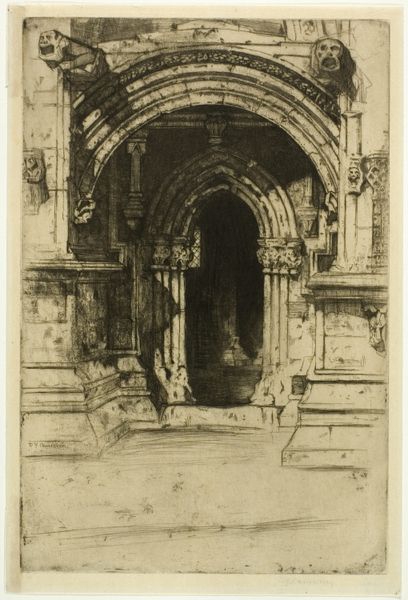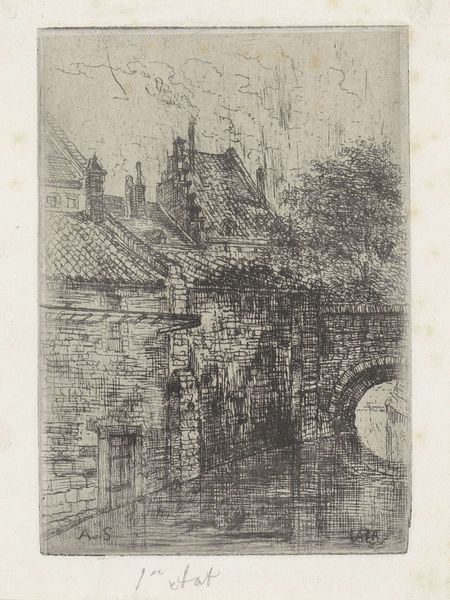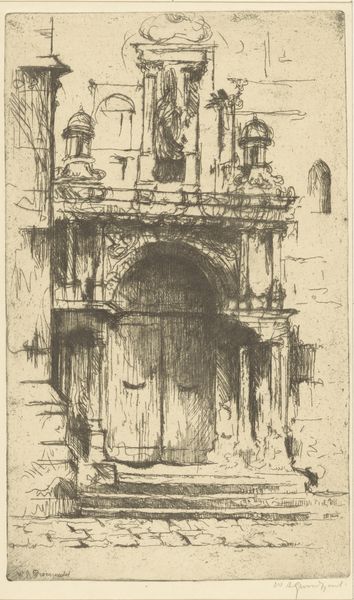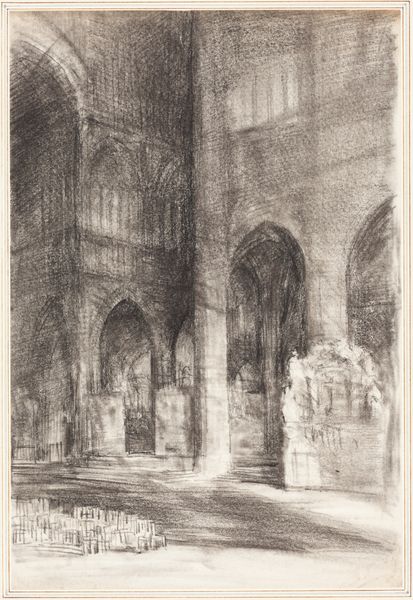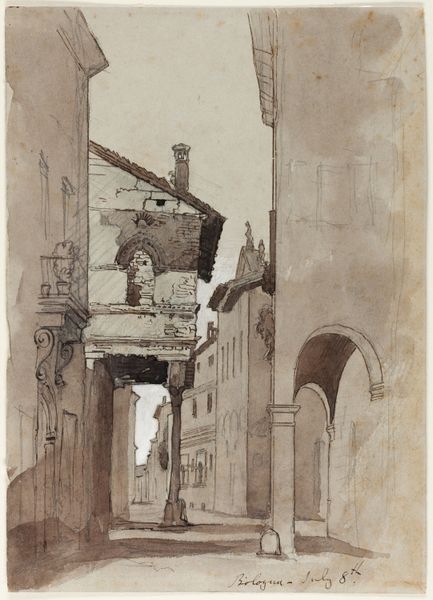
Copyright: National Gallery of Art: CC0 1.0
Editor: Here we have Joseph Pennell’s "Grosse Horloge, Rouen," an etching from 1907. It depicts a clock tower and bustling street scene. It feels… hazy, almost dreamlike, yet grounded by the details of the architecture. I'm curious, what stands out to you in this piece? Curator: The etching itself is significant. Printmaking democratized art production and circulation in ways previously unimaginable. Consider the socio-economic implications: prints were accessible, reproducible commodities that shifted power away from the elite, disrupting the art market by changing access to and ideas of “original” art. What labor went into producing the plate? Editor: Right, it’s not a unique painting. I imagine the etching process involved quite a bit of skilled manual work. Curator: Precisely. Think about the acid-etching process, the skill required to create those fine lines that give such depth. This labor-intensive technique is rendered into a reproducible format which means its circulation could reach the middle classes. This challenges our understanding of 'high' and 'low' art in the period. Where would you position Pennell, given the elitism associated with the art world? Editor: Hmm, it makes me wonder about his intended audience. Was he trying to reach a broader public, or mainly other artists and collectors interested in innovative techniques? Curator: Good question. Also consider the choice of Rouen: an industrial city, but depicted with an aesthetic sensibility that romanticizes the locale. What does that tell us about the values projected onto urban space at the time? Editor: So, beyond just appreciating the aesthetic, it’s about understanding the entire system of production and consumption. The labor involved in making and distributing the print, its accessibility, and how it was viewed within its own social context. Curator: Exactly. It is a material object enmeshed in a network of social and economic relations. Approaching it from this angle really opens up the potential to discover the deeper, historically situated, narratives present.
Comments
No comments
Be the first to comment and join the conversation on the ultimate creative platform.
